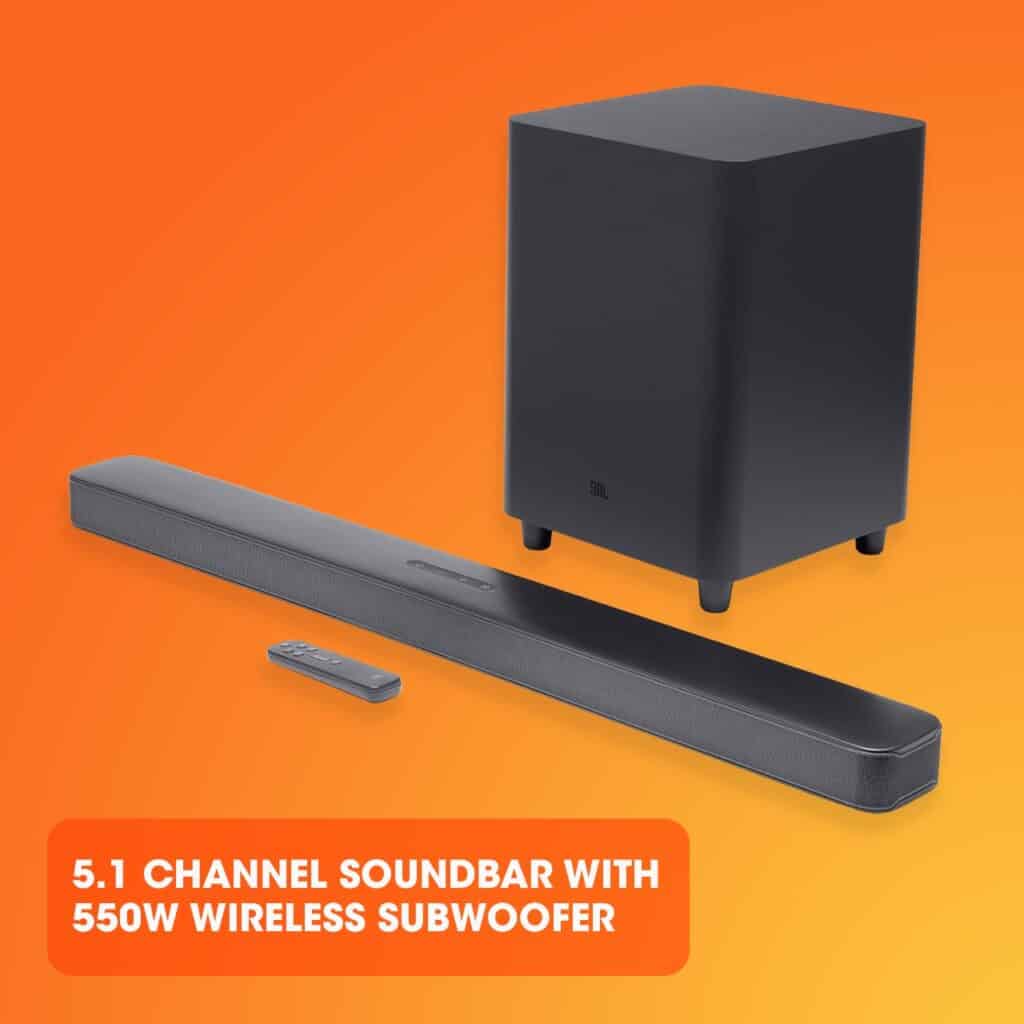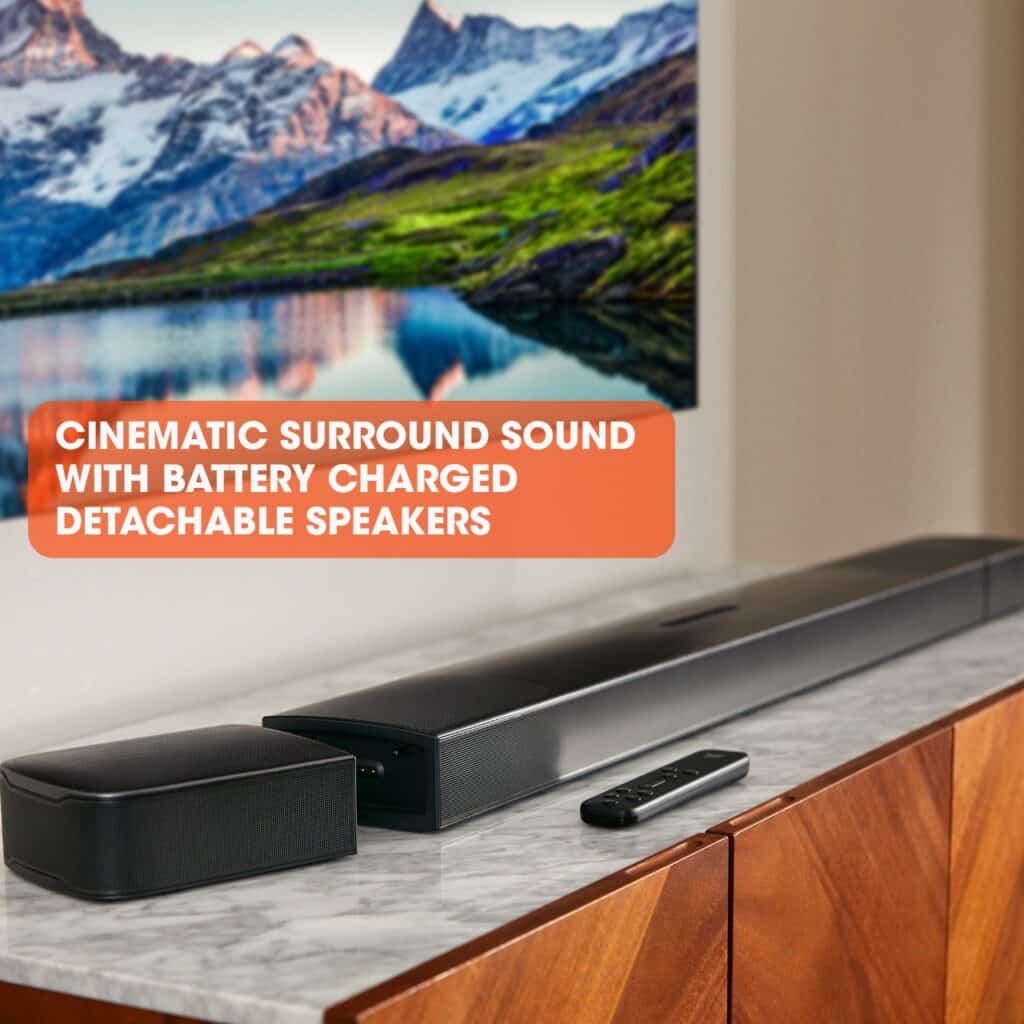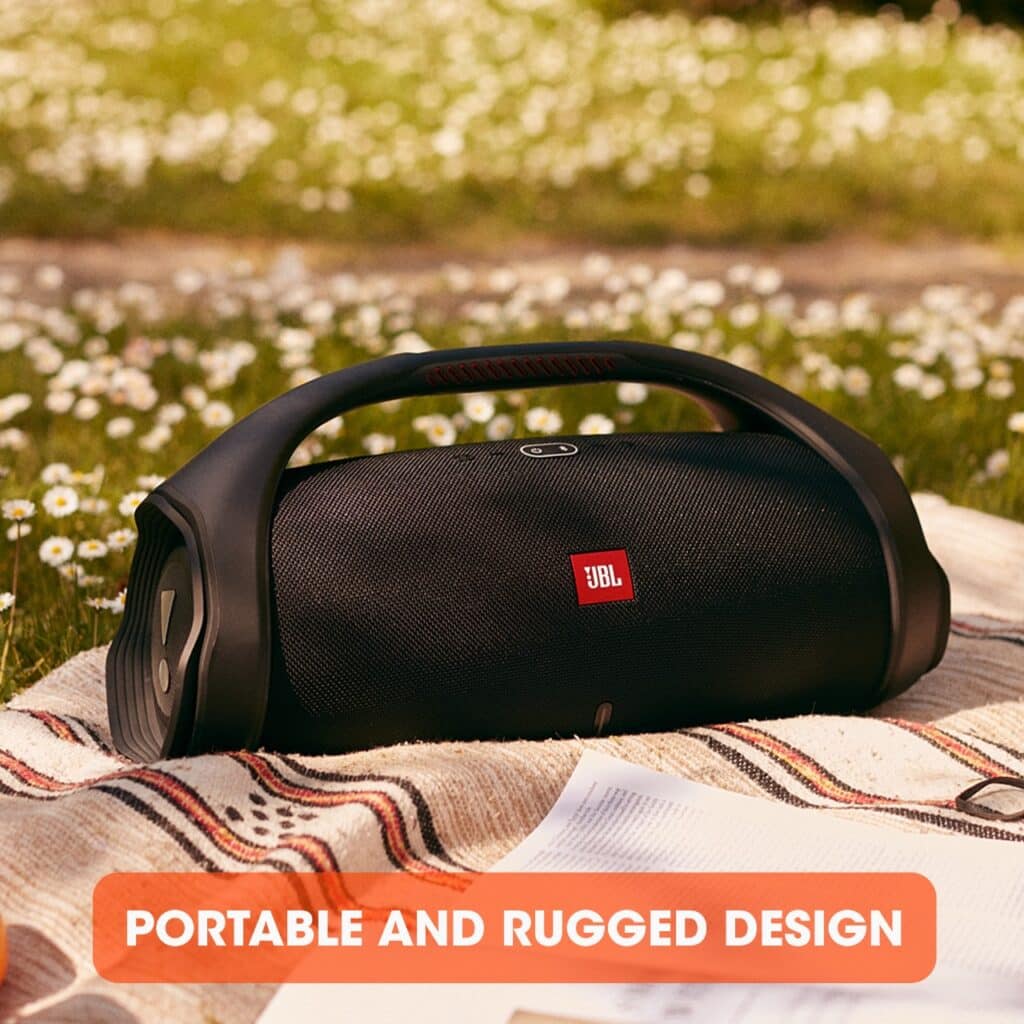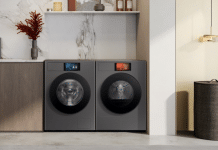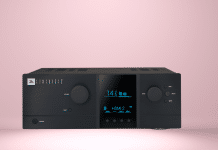
– On the importance of subwoofers and the science behind
Watching movies, tucked in a plush, comfy couch while munching on some homemade snacks, after a long office day or on weekends, indeed refreshes and reset our fatigued minds. Visuals accompanied with sound engrosses the audience by offering an immersive visual and auditory gratification. The music and sound effects of a movie are quite crucial for a riveting experience and are often convoluted. Therefore, a sound system is always preferred to keep up with each soundwave. Every sound comprises both high and low frequencies. But, loudspeakers alone are not enough to reproduce the lowest frequencies from the sound effects of movies like an explosion, gunshot or something similar. As a result, the audience can hear the sounds but is not able to feel and get absorbed into them.
Subwoofers, one of the important components of a comprehensive audio system, are capable of delivering frequencies as low as 20-200 Hz. Also, subwoofers can release all the low-frequency effects and are liable to the .1 in a 7.1 sound system. Working placidly with the remaining sound system as a single unit, these use large drivers called woofers, enclosed in a wood or plastic structure, to produce deeper sounds. A clearer bass is produced when a subwoofer uses the woofer and a built-in amplifier that powers the signal. There was a time when subwoofers were more of specialist devices relevant to the hi-fi enthusiasts, especially those who had an interest in large pipe organ generated music. Today, subwoofers are being considered for home entertainment/music systems or an entire home cinema setup. People, these days, are opting for smaller ‘satellite’ left and right speakers along with one or more subwoofers. This format is known as 2.1, where the two refers to the primary pair of stereo speakers and .1 refers to the subwoofer with limited bandwidth. Similarly, 5.1 denotes a surround sound system with five main channels and a subwoofer, that will take care of the low-frequency effects channel (LFE).
Subwoofers for Home Cinema:
Most speakers in an audio or home theatre system are unable to reproduce all the frequencies sent by the audio source. The low frequencies, emulated by subwoofers, offer a rich, captivating, three-dimensional effect. When it comes to enhancing a home cinema setup, interior designers and system integrators often prefer subwoofers that are not much bulky and can be easily concealed in a room.
“It is extremely essential to have a good quality transducer (speaker) which can reproduce sound in its most natural way without any distortion. But, a speaker can only perform to its optimum with the appropriate enclosure design. It should represent 20-200 hertz. It must be accurate in producing both lower and higher frequencies while blending seamlessly with other experiences and surroundings. E.g. the speaker should match the size of the room”, says Ravi Lakkundi, Senior Director, Product Management-Lifestyle, Harman India. “To attain the optimum acoustic experience, the subwoofers must be placed in an appropriate room keeping the size in mind, and one without any standing waves. Remember, a big subwoofer in a small room will not do justice or vice versa. Even the world’s best subwoofer might not perform well in a bad room”, adds Lakkundi.
The primary thing that needs to be kept in mind while integrating subwoofers, is to make sure the subwoofer’s amplifier is able to power the driver and the subwoofer range blends seamlessly with the main speakers. Therefore, one must always reach out to experts like subwoofer installers or sound system integrators for a flawless setup. In-wall speakers, due to their exceptional performance, are widely integrated into most multiroom audio and even home theatre installations. Multiple subwoofers, when placed accurately, can initiate even bass distribution by filling in all the dips in the room. “It is important to understand that low frequency is very vital for a holistic audio experience. Imagine a movie being played in your home theatre, where a lion is growling or an elephant rumbling, and you don’t hear the animal sounds. That would definitely not be a complete acoustic experience. Now, if you play the same movie connecting to a full-range speaker, only then you can do justice to the entire entertainment experience”, explains Lakkundi.
“Coming to the classification of subwoofers, there are two types – active and passive, based on whether they are actively powered or passively powered. In an active subwoofer, the amplifier is built inside the subwoofer and these days it is wireless. In a passive subwoofer, the amplifier is a part of the soundbar, but the woofer is outside. Other types are ported subwoofer and non-ported, down-firing and front-firing. In the case of front-firing, the speakers are in front, and in down-firing, it faces the ground. It is just a design preference and depends on various factors like the dimension of the room, the placement of the subwoofer, different kinds of floorings whether wooden, marble, etc. and the overall aesthetics. Subwoofers are always large to reproduce lower frequency which means higher wavelength. No matter where a subwoofer is kept, experience of low frequency is omnidirectional”, adds Lakkundi.
Subwoofers & Woofers
Both subwoofers and woofers generate low-frequency sound waves and add depth to the sound by emphasizing bass. But, the way they do it, their sound output, drivers, amplifiers and power consumption are different.
Differences:
- Where subwoofers are typically used alone in a sealed enclosure, devised especially for low-frequency audio, woofers are mostly part of a 2 or 3-way speaker system. The frequency range offered by subwoofers is usually 20 to 200 Hz (approximately), whereas, woofers produce a frequency range, which comprises both bass and midrange up to the tweeter’s cut-off frequency. Woofers have a broader frequency range of 40 Hz to 2500 Hz.
- A subwoofer can tolerate a higher range of cone motion than a traditional woofer.
- Dual voice coil (DVC) subwoofers are quite commonly available. But woofers, mostly, are not dual voice coils.
- Subwoofers can produce extreme output levels due to their thicker and stiffer cones.
- Subwoofers are ideal for surround sound systems and woofers are perfect for stereo systems. Woofers can work on their own, unlike subwoofers, which can only improve the existing sound setup.
Latest Innovations
Subwoofers are usually quite bulky. With constant technological advancements, subwoofers, today, also come in compact sizes with more efficient amplifiers and dual-driver designs. “Technologies like thin line subwoofers in cars or home, lowest distortions like the design of enclosure or magnet to build material are some of the upcoming technologies in this segment which keep evolving with more and more R&D. And, we need to understand that consumer audio has been seeing innovations each day. Hence, the bottom line is to realize that a high-quality subwoofer must have a linear performance, unlike non- linearity creating distortion. For example, sound systems like JBL BAR 9.1 True Wireless Surround can give a cinematic 9.1 surround experience of a movie theatre into homes with two detachable surround speakers and the added punch of Dolby Atmos® and DTS:X™ 3D sound”, states Lakkundi.
In A Nutshell
A well-designed subwoofer will always emit quality sound effortlessly by the virtue or expertise of reproducing good music. “A subwoofer needs to move the cone efficiently to represent the sound. And if that engineering is done to its best, one will surely enjoy distortion-free music”, concludes Lakkundi.




